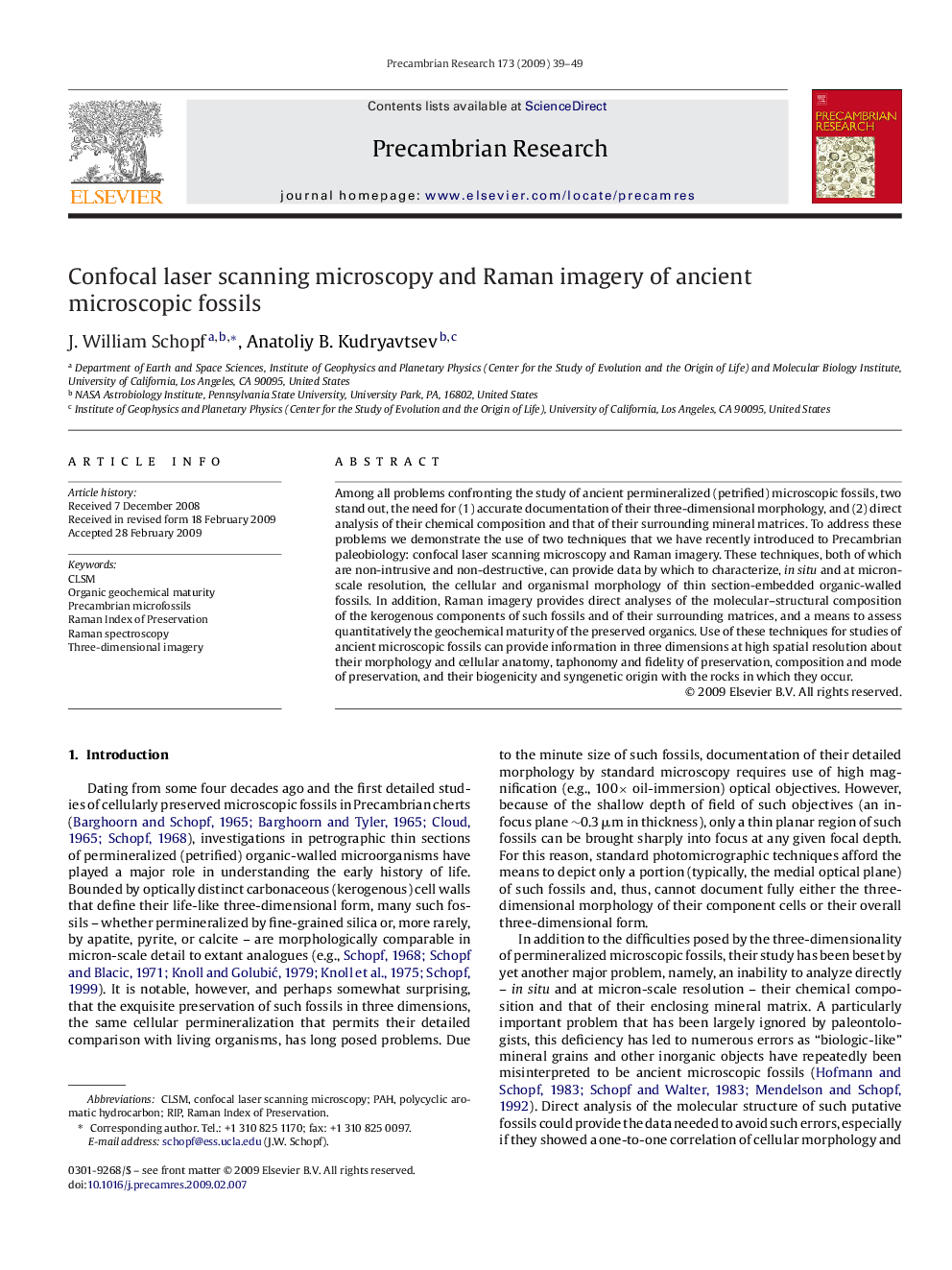| Article ID | Journal | Published Year | Pages | File Type |
|---|---|---|---|---|
| 4724022 | Precambrian Research | 2009 | 11 Pages |
Among all problems confronting the study of ancient permineralized (petrified) microscopic fossils, two stand out, the need for (1) accurate documentation of their three-dimensional morphology, and (2) direct analysis of their chemical composition and that of their surrounding mineral matrices. To address these problems we demonstrate the use of two techniques that we have recently introduced to Precambrian paleobiology: confocal laser scanning microscopy and Raman imagery. These techniques, both of which are non-intrusive and non-destructive, can provide data by which to characterize, in situ and at micron-scale resolution, the cellular and organismal morphology of thin section-embedded organic-walled fossils. In addition, Raman imagery provides direct analyses of the molecular–structural composition of the kerogenous components of such fossils and of their surrounding matrices, and a means to assess quantitatively the geochemical maturity of the preserved organics. Use of these techniques for studies of ancient microscopic fossils can provide information in three dimensions at high spatial resolution about their morphology and cellular anatomy, taphonomy and fidelity of preservation, composition and mode of preservation, and their biogenicity and syngenetic origin with the rocks in which they occur.
